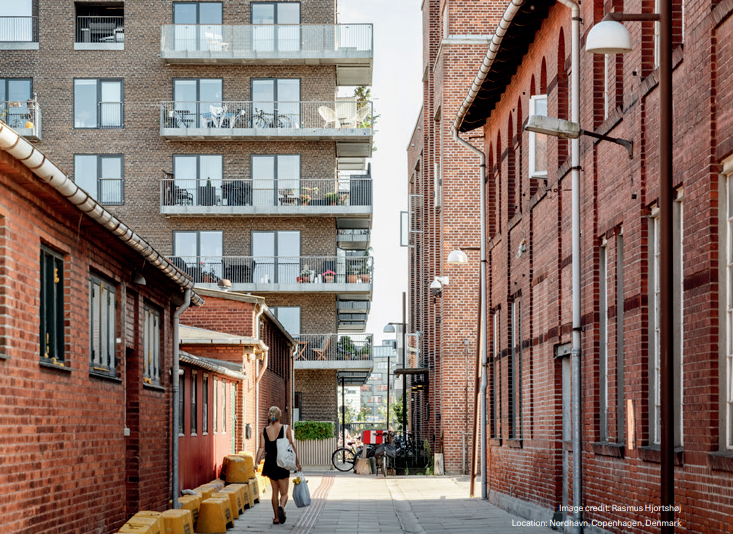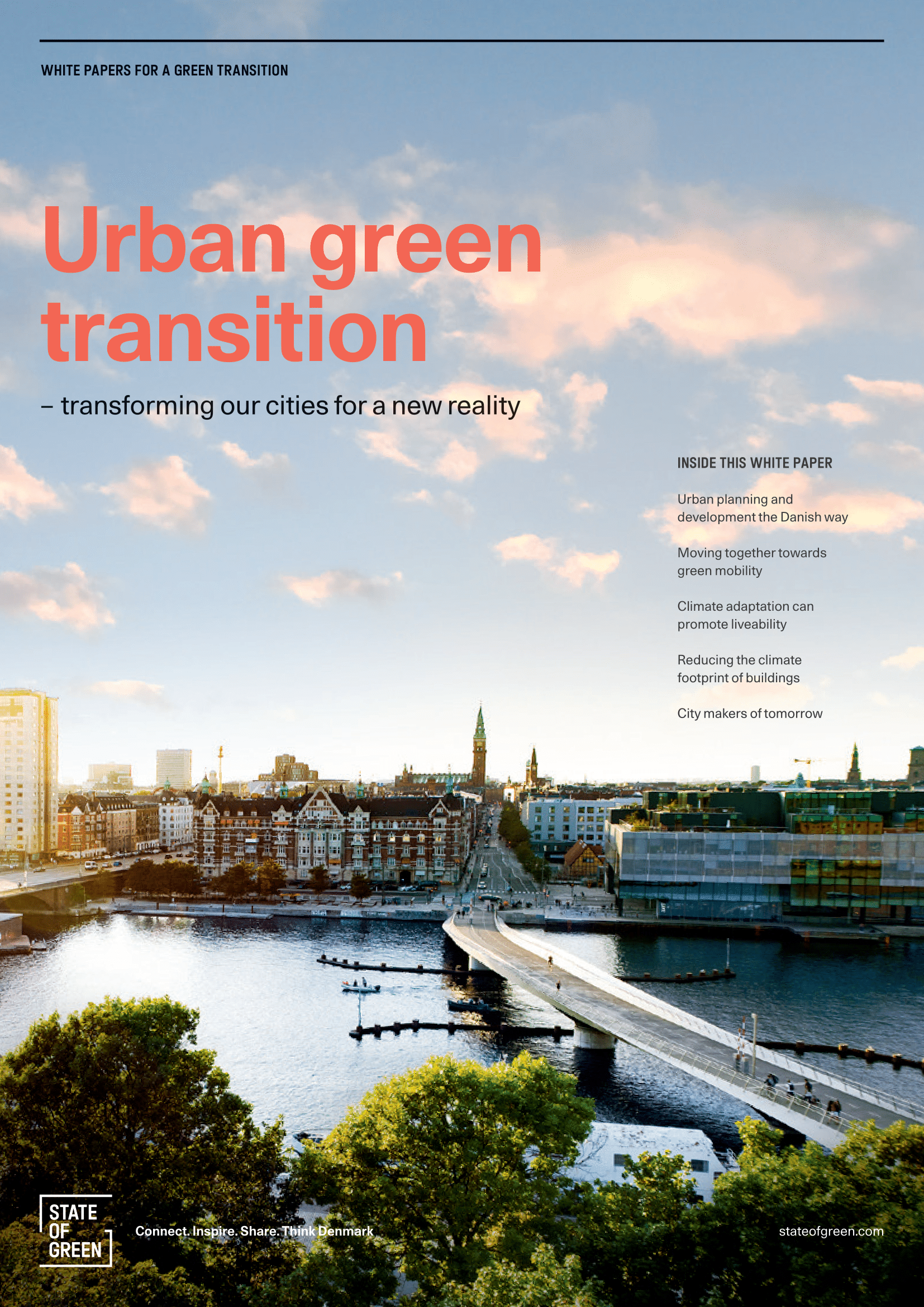Article by
Anne Mette Boye, City Architect, Aarhus & Tina Saaby, CEO, Danish Town Planning Institute
Perspective
Smart cities
Urban planning and development


Anne Mette Boye, City Architect, Aarhus & Tina Saaby, CEO, Danish Town Planning Institute
Building less and transforming more Attention to resource consumption and CO2 emissions means that the city makers of tomorrow must build using the raw materials of a place’s existing structures and stories.
They will read, decode, analyse, and understand places with deeper knowledge. They will preserve, transform, and reuse as much as possible before tearing down and removing. In this way, a city’s deep history will be visible, retold, and passed on generation to generation, story to story — with new chapters added along the way. This means that places in the future will appear different; that the world will be experienced with the variety, diversity, and changeability that is the foundation of joy in life. The consequence of this trend means that city makers of tomorrow will carefully reuse buildings, landscapes, infrastructure, and facilities. They will appreciate that urban development is complex and navigate it to create more sustainable cities.
City makers of tomorrow will be driven by the wellbeing of our planet and the climate goal of CO2 neutrality. Cities and buildings will look completely different simply because the materials and methods used today are not sustainable. Today’s concrete will be out of production and almost everything will be recycled. The areas between cities will be more varied, our homes will be smaller, and traffic speeds will be reduced. Tomorrow’s city makers will learn from nature’s processes, understand its living conditions, and use that knowledge to shape and build our cities, houses, landscapes, and urban spaces.
Human well-being is under pressure all over the globe. The physical framework and layout of our cities and homes directly affect our quality of life, and provide frameworks for joy, relationships, coexistence, communities, and physical wellbeing. City makers of tomorrow know that daylight releases endorphins, that fresh air makes us think more clearly, that high ceilings increase creativity, that relationships trigger dopamine, and that eye contact, touch, and smiles spark happiness and connection.
This knowledge will be translated into urban spaces through the creation of a good microclimate and an indoor climate that lets you breathe. It will cultivate neighbourhoods where you can meet each other and feel safe, and produce quality learning spaces and communities which increase knowledge and cohesion in local areas. Resources will be set aside for tomorrow’s city makers to become even more skilled at understanding human needs and the consequences that physical frameworks can have on quality of life. They will be holistically oriented, and politicians will place high demands on them to find human-centred solutions for every income.
Urban development in recent years has taught tomorrow’s city makers to mix functions. They know that people cannot be put in uniform boxes; they live different lives with many different phases, and experience changing needs throughout them. The cities of the future will be able to accommodate this diversity to a much greater extent. A school or a company, for example, will become a cultural centre or other facility for
getting together. Daily chores and the workplace will live in closer proximity. Investments in cycling infrastructure will pay society back through health, education, and employment sectors. The same investment in infrastructure for cars means increased investment in the same areas.
City makers of tomorrow know that our cities must be planned together with water management in mind, making securing drinking water and preventing flooding critical priorities. The same applies to holistic planning of recreational areas to make space for biodiversity and a good food supply.
The human-centric Danish approach to urban development started in the 1970s as a backlash against the rational part of functionalism. City makers of tomorrow pay tribute to this approach by investing more and more in the communities, public spaces, and common networks which bind cities together. It is in our urban and street spaces that we can develop the framework for city life. With this focus, tomorrow’s city makers can support local identities, create more urban nature, establish a sense of community, build connection with fellow citizens, and help produce healthier and happier people. They will understand that each individual house, and each individual urban space can always give something back to the city.
Holistic urban development requires city makers to collaborate across professional disciplines, sectors, and city administrations in partnership with citizens, businesses, artists, researchers, and politicians. The Danish way is about succeeding at the city’s many levels of scale, with ownership and innovative power stemming from many actors, forms of knowledge and action, and firm trust in cooperation for common good.

Join us on a journey, where we demonstrate why holistic and strategic city planning and development within mobility and infrastructure, climate adaptation, as well as environmentally conscious architecture and construction must take centre stage in the transformed cities of tomorrow.
Perspective
Urban planning and development
+1
publications
Climate change adaptation
+11
publications
Combined heat and power production
+10
News
Urban planning and development
+12